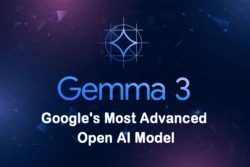If you’ve been following the AI space lately, you’ve probably noticed that Large Language Models (LLMs) have gone from being science fiction to everyday tools that can write code, solve math problems, and even help you brainstorm creative ideas. These incredibly smart AI systems are basically massive neural networks that have been fed enormous amounts of text data, teaching them to understand and generate human-like language with surprising accuracy. What started as simple autocomplete tools have evolved into powerful assistants that can reason through complex problems, write entire applications, and engage in meaningful conversations.
Open source LLMs are completely changing the game by making these powerful AI capabilities freely available to everyone. In 2025, we’ve reached a tipping point where open source models aren’t just “good enough” alternatives – they’re often the better choice for anyone serious about integrating AI into their projects.
Table of Contents
- What is Hugging Face?
- Benefits of Open Source LLMs
- Top 15 Open Source LLMs
- 1. Grok 2.5 (xAI) – Latest Release
- 2. Llama 4 (Meta AI)
- 3. DeepSeek-R1 (DeepSeek AI)
- 4. Mistral Small 3.2 (Mistral AI)
- 5. Qwen 3 (Alibaba Cloud)
- 6. Gemma 2 (Google)
- 7. Nemotron-4 (NVIDIA)
- 8. Command R+ (Cohere)
- 9. CodeLlama 34B (Meta AI)
- 10. Chronos-T5 (Amazon Science)
- 11. Phi-4 (Microsoft)
- 12. Falcon 3 (TII UAE)
- 13. T5Gemma (Google)
- 14. Vicuna-13B-v1.5 (UC Berkeley)
- 15. Selene Mini: SOTA 8B LLM (Atla)
- Key Trends in Open Source LLMs 2025
- Conclusion
What is Hugging Face?
Hugging Face Hub is the world’s largest platform for open source machine learning models, serving as the central ecosystem where developers, researchers, and AI enthusiasts discover, share, and deploy cutting-edge AI models. Think of it as the “GitHub for AI” – a collaborative platform that has democratized access to state-of-the-art language models, making advanced AI capabilities available to everyone from individual developers to Fortune 500 companies. All the models featured in this guide are readily available on Hugging Face Hub with direct links provided, making it incredibly easy to download, experiment with, or integrate these LLMs into your applications with just a few lines of code.
What makes Hugging Face special, is its seamless integration with popular frameworks like PyTorch, TensorFlow, and JAX, combined with its intuitive interface that turns complex model deployment into simple Python commands. Whether you’re a seasoned ML engineer or just getting started with AI, Hugging Face removes the technical barriers that once made accessing these powerful models a challenge.
Why Hugging Face is Essential for This Guide:
- Instant Access: Download any of these 15 models with simple
from_pretrained()functions - Unified Experience: Consistent API across all models regardless of their architecture or size
- Rich Documentation: Detailed model cards with benchmarks, usage examples, and performance metrics
- Thriving Community: Active discussions, community fine-tunes, and collaborative improvements
- Production Ready: Built-in support for popular ML frameworks and deployment platforms
- Version Management: Track model updates and pin specific versions for reproducible results
Benefits of Open Source LLMs
- Cost Effectiveness: No expensive API fees or subscription costs – just download and run the models on your own hardware.
- Full Control & Privacy: Keep your data completely private by running models on-premises, with no third-party services involved.
- Customization Freedom: Fine-tune and modify models for your specific needs without restrictions or limitations.
- Transparency: Complete visibility into how the models work, including architecture, training data, and weights.
- No Vendor Lock-in: Never worry about a company changing their pricing, terms of service, or shutting down their API.
- Community Innovation: Benefit from an amazing community of developers constantly improving models and sharing techniques.
- Long-term Reliability: Models remain available regardless of business decisions or corporate changes.
- Commercial Flexibility: Use models in commercial applications without complex licensing restrictions (depending on the specific license).
Top 15 Open Source LLMs
1. Grok 2.5 (xAI) – Latest Release
Grok 2.5 represents xAI’s most ambitious open source release to date, marking a significant shift in the company’s strategy toward open collaboration. Built upon advanced transformer architecture with multi-modal capabilities, this model demonstrates exceptional performance in reasoning, mathematical problem-solving, and code generation tasks. The model’s release in August 2025 has been particularly notable for its ability to process real-time information and maintain context across extended conversations. What sets Grok 2.5 apart is its unique training methodology that emphasizes both factual accuracy and creative problem-solving, making it particularly effective for research applications and complex analytical tasks. The model has shown remarkable performance improvements over its predecessors, with enhanced safety measures and responsible AI practices built into its core architecture.
Repository: https://github.com/xai-org/grok-1 (updated for Grok 2.5)
Hugging Face: Available on Hugging Face Hub
Release Date: August 2025
Parameters: ~500GB model size
License: Apache 2.0
Key Features:
- Latest model from xAI, open-sourced just days ago
- Exceptional reasoning and problem-solving capabilities
- Multi-modal support for text and image processing
- Real-time information processing capabilities
- Strong performance in code generation and mathematical reasoning
- Optimized for research and development applications
- Built on advanced transformer architecture
- Supports fine-tuning for specialized use cases
Best Use Cases:
- Advanced reasoning tasks
- Code generation and debugging
- Mathematical problem solving
- Research applications
- Conversational AI development
2. Llama 4 (Meta AI)
Llama 4, released by Meta AI in April 2025, represents the beginning of a new era for the Llama ecosystem with natively multimodal capabilities. This latest iteration marks Meta’s most ambitious open-source release, introducing two efficient Mixture-of-Experts (MoE) models: Llama 4 Scout with 17 billion parameters and 16 experts, and Llama 4 Maverick with 17 billion parameters and 128 experts. What sets Llama 4 apart is its 10 million token context window that can run on a single GPU, making it incredibly practical for real-world deployments. The upcoming Llama 4 Behemoth will feature 288B active parameters with 16 experts and nearly two trillion total parameters, positioning it as one of the most powerful open-source models ever released. The model’s multimodal design allows it to process both text and images natively, while maintaining efficiency through its MoE architecture that only activates relevant experts for each task.
Repository: https://github.com/meta-llama/llama-models
Hugging Face: meta-llama/Llama-4-Scout-17B-16E-Instruct
Release Date: April 5, 2025
Parameters: Scout (17B with 16 experts), Maverick (17B with 128 experts), Behemoth (288B active, ~2T total)
License: Custom Meta Community License
Key Features:
- Natively multimodal models with significant performance leap forward
- Extended 10 million token context window
- Optimized to run on single NVIDIA H100 GPU for Scout variant
- Mixture-of-Experts architecture with 17B active parameters
- Advanced reasoning and instruction-following capabilities
- Seamless integration with Hugging Face ecosystem
- Built-in safety measures and responsible AI practices
- Available for research, enterprise, and commercial deployment
Best Use Cases:
- Multimodal applications (text and image processing)
- Long-context applications requiring extensive memory
- Enterprise deployments with resource constraints
- Research and development projects
- Commercial applications with custom licensing
3. DeepSeek-R1 (DeepSeek AI)
DeepSeek-R1 stands as a groundbreaking achievement in open-source reasoning models, released in January 2025 with a focus on step-by-step logical reasoning and chain-of-thought processing. This model utilizes a sophisticated Mixture-of-Experts architecture that activates only 37 billion parameters per inference step from its total 671 billion parameter base, making it incredibly efficient for complex reasoning tasks. Trained primarily through reinforcement learning techniques, DeepSeek-R1 has demonstrated state-of-the-art performance on mathematical reasoning benchmarks, including achieving remarkable results on AIME 2024 that surpass much larger models. The model’s MIT licensing makes it particularly attractive for commercial applications, while its distilled versions enable deployment on single GPU setups, democratizing access to advanced reasoning capabilities.
Repository: https://github.com/deepseek-ai/DeepSeek-R1
Hugging Face: deepseek-ai/deepseek-r1-distill-qwen-32b
Release Date: January 20, 2025
Parameters: 671B (MoE architecture with 37B active parameters)
License: MIT License
Key Features:
- Specialized reasoning model designed for logical inference
- Outperforms 95% of proprietary models in reasoning tasks
- Enhanced mathematical capabilities with AIME 2024 SOTA performance
- Superior code generation performance
- Optimized for complex problem-solving with MoE efficiency
- Efficient training methodology using reinforcement learning
- Strong multilingual support
- Advanced chain-of-thought reasoning capabilities
Best Use Cases:
- Logical reasoning tasks
- Mathematical computations
- Scientific research
- Code analysis and generation
- Complex problem solving
4. Mistral Small 3.2 (Mistral AI)
Mistral Small 3.2, released on Hugging Face in June 2025, represents a significant refinement over its predecessor with better instruction following, fewer infinite generation issues, improved function calling, and reduced repetition errors. This 24-billion parameter model continues Mistral AI’s philosophy of delivering maximum performance in compact packages, making it an ideal choice for organizations seeking enterprise-grade capabilities without the computational overhead of larger models. Building on Mistral Small 3.1’s multimodal capabilities and 128K token context window, version 3.2 addresses key user feedback regarding response quality and reliability. The model has been specifically optimized to reduce the repetitive behaviors that could occur in extended conversations, while maintaining its strong multilingual support and edge deployment capabilities. What sets this version apart is its enhanced tone and more natural conversational flow, making it particularly valuable for customer-facing applications and interactive AI systems.
Repository: https://github.com/mistralai/mistral-src
Hugging Face: mistralai/Mistral-Small-3.2-Instruct
Release Date: June 20, 2025
Parameters: 24B
License: Apache 2.0
Key Features:
- Enhanced instruction following with reduced repetition errors
- Improved function calling capabilities for better API integration
- Optimized for edge deployment with 24B parameters
- Strong multilingual performance across multiple languages
- Advanced safety features with responsible AI practices
- Fast inference speed with memory-efficient design
- Better conversational tone and natural dialogue flow
- Apache 2.0 licensing for commercial flexibility
Best Use Cases:
- Resource-constrained environments
- Edge computing applications
- Function calling and API integration tasks
- Multilingual text processing
- Customer service applications
5. Qwen 3 (Alibaba Cloud)
Qwen 3, unveiled by Alibaba Cloud on April 29, 2025, represents the latest generation of large language models in the Qwen series, offering a comprehensive suite of both dense and Mixture-of-Experts (MoE) models. The flagship model, Qwen3-235B-A22B, achieves competitive results in benchmark evaluations of coding, math, and general reasoning tasks while activating only 22 billion parameters from its total 235 billion parameter base, making it incredibly efficient for complex reasoning tasks. What makes Qwen 3 particularly impressive is its “Think Deeper, Act Faster” philosophy, incorporating advanced reasoning capabilities with enhanced multilingual support for 119 languages and seamless tool integration. The model family spans from lightweight 600M parameter versions suitable for edge devices to the massive MoE variants designed for enterprise applications. Qwen 3’s training methodology emphasizes both practical applications and theoretical reasoning, with significant improvements in code generation, mathematical problem-solving, and multi-step reasoning tasks.
Repository: https://github.com/QwenLM/Qwen3
Hugging Face: Qwen/Qwen3-32B-Instruct
Release Date: April 29, 2025
Parameters: 600M, 2.5B, 6B, 14B, 32B (dense), 60B-A6B, 235B-A22B (MoE)
License: Apache 2.0
Key Features:
- Comprehensive model family from 600M to 235B parameters
- Advanced reasoning with “Think Deeper, Act Faster” capabilities
- Mixture-of-Experts architecture for efficient large-scale processing
- Enhanced multilingual support with 119 languages
- Superior performance in coding, math, and reasoning benchmarks
- Seamless tool integration and API calling
- Apache 2.0 licensing for commercial applications
- Optimized for both edge devices and enterprise deployment
Best Use Cases:
- Advanced reasoning and problem-solving tasks
- Code generation and software development
- Mathematical computations and analysis
- Multilingual applications and translation
- Enterprise AI applications with tool integration
6. Gemma 2 (Google)
Gemma 2, Google’s latest contribution to the open-source LLM ecosystem released in June 2025, showcases the company’s commitment to democratizing AI access while maintaining high performance standards. This model family has been meticulously designed for efficiency, making it particularly suitable for mobile and edge deployment scenarios where computational resources are limited. Gemma 2’s architecture incorporates Google’s latest research in transformer optimization, resulting in models that deliver impressive performance relative to their size. The model emphasizes responsible AI practices with built-in safety measures that don’t compromise functionality. Google’s approach with Gemma 2 focuses on creating models that are not only powerful but also practical for real-world deployment, with optimizations that reduce memory usage and inference time while maintaining accuracy across diverse tasks.
Repository: https://github.com/google/gemma_pytorch
Hugging Face: google/gemma-2-27b-it
Release Date: June 2025
Parameters: 2B, 9B, 27B
License: Apache 2.0
Key Features:
- Lightweight and efficient architecture
- Strong performance across diverse tasks
- Optimized for mobile and edge deployment
- Advanced safety features and responsible AI practices
- Multi-turn conversation capabilities
- Efficient memory usage
- Strong reasoning abilities for its size
- Excellent instruction following
Best Use Cases:
- Mobile applications
- Edge computing
- Resource-efficient deployments
- Educational applications
- Personal assistants
7. Nemotron-4 (NVIDIA)
NVIDIA’s Nemotron-4, released in March 2025, represents a pinnacle of enterprise-grade open-source language models, specifically optimized for NVIDIA’s hardware ecosystem. This model leverages NVIDIA’s deep expertise in GPU acceleration and parallel computing to deliver exceptional performance in enterprise environments. Nemotron-4’s architecture has been fine-tuned for technical and scientific applications, making it particularly valuable for organizations working with complex computational tasks. The model’s training incorporates NVIDIA’s advanced techniques in distributed computing and memory optimization, resulting in a system that can handle large-scale inference tasks with remarkable efficiency. What sets Nemotron-4 apart is its seamless integration with NVIDIA’s software stack, including optimizations for TensorRT and Triton inference server, making it a natural choice for organizations already invested in NVIDIA’s ecosystem.
Repository: https://github.com/NVIDIA/NeMo
Hugging Face: nvidia/Nemotron-4-340B-Instruct
Release Date: March 2025
Parameters: 15B, 340B
License: Apache 2.0
Key Features:
- Optimized for NVIDIA hardware acceleration
- Excellent performance in enterprise applications
- Strong multilingual capabilities
- Advanced fine-tuning support
- Optimized for GPU inference
- Enterprise-grade reliability
- Strong performance in technical domains
- Advanced memory optimization
Best Use Cases:
- Enterprise applications
- GPU-accelerated inference
- Technical documentation
- Scientific computing
- Large-scale deployments
8. Command R+ (Cohere)
Command R+, Cohere’s flagship open-source model released in February 2025, has revolutionized the retrieval-augmented generation (RAG) landscape with its exceptional ability to synthesize information from multiple sources. This model represents a significant advancement in enterprise search applications, featuring sophisticated mechanisms for citation and source attribution that maintain accuracy while providing transparent reasoning chains. Command R+ has been specifically designed to excel in scenarios where factual accuracy and information synthesis are paramount, making it invaluable for research applications and knowledge management systems. The model’s architecture incorporates advanced attention mechanisms that allow it to maintain coherence across long documents while preserving the ability to trace specific claims back to their sources. Its 104 billion parameters have been optimized for information retrieval tasks, with specialized training that emphasizes both comprehension and accurate attribution.
Repository: https://github.com/cohere-ai/cohere-toolkit
Hugging Face: CohereForAI/c4ai-command-r-plus
Release Date: February 2025
Parameters: 104B
License: MIT License
Key Features:
- Exceptional retrieval-augmented generation (RAG) capabilities
- Strong performance in information synthesis
- Advanced tool use and API integration
- Multi-step reasoning abilities
- Optimized for enterprise search applications
- Strong citation and source attribution
- Robust factual accuracy
- Advanced context management
Best Use Cases:
- Information retrieval and synthesis
- Enterprise search
- RAG applications
- Research assistance
- Knowledge management
9. CodeLlama 34B (Meta AI)
CodeLlama 34B stands as Meta’s premier open-source code generation model, representing a specialized fine-tuned version of Llama 2 designed specifically for understanding and generating code across multiple programming languages. This 34-billion parameter model has become a cornerstone in the developer community, offering exceptional capabilities in code completion, debugging, and explanation tasks that rival proprietary coding assistants. What makes CodeLlama 34B particularly valuable is its deep understanding of programming concepts, syntax patterns, and best practices across languages like Python, C++, Java, PHP, TypeScript, C#, and Bash. The model’s training methodology emphasizes not just code generation but also code comprehension, making it equally adept at explaining existing code, identifying bugs, and suggesting optimizations. Its instruction-tuned variant excels in following natural language prompts to generate code, making it accessible to developers of all skill levels while maintaining the precision and accuracy required for production-level development work.
Repository: https://github.com/meta-llama/codellama
Hugging Face: codellama/CodeLlama-34b-Instruct-hf
Parameters: 7B, 13B, 34B
License: Custom Meta Community License
Key Features:
- Specialized for code generation and understanding
- Support for multiple programming languages
- Advanced debugging and explanation capabilities
- Optimized for software development workflows
- Strong performance in competitive programming
- Code completion and suggestion features
- Integration with development environments
- Advanced code analysis capabilities
Best Use Cases:
- Software development
- Code generation
- Programming education
- Automated testing
- Code review assistance
10. Chronos-T5 (Amazon Science)
Chronos-T5 represents Amazon Science’s groundbreaking approach to time series forecasting by adapting transformer language model architectures for temporal data prediction. This innovative framework treats time series data as a language by tokenizing numerical values through scaling and quantization into a fixed vocabulary of 4096 tokens, significantly fewer than the original T5’s 32,128 tokens, resulting in more efficient parameter usage. What makes Chronos-T5 revolutionary is its ability to perform zero-shot forecasting across diverse domains without requiring domain-specific training, achieving remarkable performance on new time series data out of the box. The model family spans from tiny 8-million parameter versions suitable for edge deployment to large 710-million parameter variants for complex forecasting tasks. Built on Google’s T5 architecture but specifically optimized for temporal patterns, Chronos-T5 has demonstrated superior performance compared to traditional time series forecasting methods while offering the flexibility and generalization capabilities of foundation models.
Repository: https://github.com/amazon-science/chronos-forecasting
Hugging Face: amazon/chronos-t5-large
Release Date: March 2024 (Maintained and updated through 2025)
Parameters: Tiny (8M), Mini (20M), Small (46M), Base (200M), Large (710M)
License: Apache 2.0
Key Features:
- Innovative time series tokenization using scaling and quantization
- Zero-shot forecasting capabilities across diverse domains
- Multiple model sizes from 8M to 710M parameters for various deployment needs
- Built on proven T5 architecture optimized for temporal data
- Superior performance compared to traditional forecasting methods
- Foundation model approach enabling broad generalization
- Efficient vocabulary design with 4096 tokens vs T5’s 32K tokens
- Probabilistic forecasting with uncertainty quantification
Best Use Cases:
- Financial time series forecasting and market prediction
- Supply chain and demand forecasting
- Energy consumption and resource planning
- IoT sensor data prediction and monitoring
- Business analytics and trend forecasting
11. Phi-4 (Microsoft)
Phi-4, Microsoft’s latest iteration in the Phi model family released in January 2025, represents a significant advancement in small-scale reasoning models with its 14-billion parameter architecture that rivals much larger models on complex reasoning tasks. Available in three variants – Phi-4 Reasoning, Phi-4 Mini Reasoning (4B parameters), and Phi-4 Reasoning Plus – this model family demonstrates that exceptional reasoning capabilities don’t always require massive parameter counts. Phi-4’s design philosophy focuses on advanced reasoning ability while maintaining efficiency, making it particularly valuable for applications where computational resources are limited but sophisticated problem-solving is required. The model has been specifically optimized for mathematical reasoning, logical inference, and step-by-step problem decomposition, achieving performance levels that were previously only possible with much larger models. Its MIT licensing makes it extremely accessible for both research and commercial applications, while its compact size enables deployment on everyday devices including laptops, tablets, and mobile phones.
Repository: https://github.com/microsoft/Phi-4
Hugging Face: microsoft/Phi-4-reasoning-14B
Release Date: January 2025
Parameters: 14B (Reasoning), 4B (Mini Reasoning), 14B (Reasoning Plus)
License: MIT
Key Features:
- Advanced reasoning capabilities in a compact 14B parameter model
- Three variants optimizing for different use cases and resource constraints
- Exceptional mathematical and logical reasoning performance
- Optimized for mobile and edge deployment scenarios
- MIT licensing for maximum flexibility and accessibility
- Efficient inference with low latency requirements
- Strong performance on complex reasoning benchmarks
- Designed for everyday devices including laptops and tablets
Best Use Cases:
- Mathematical and logical reasoning tasks
- Mobile applications requiring sophisticated AI
- Edge computing with reasoning requirements
- Educational applications and tutoring systems
- Resource-constrained environments needing advanced AI
12. Falcon 3 (TII UAE)
Falcon 3, released by the Technology Innovation Institute (TII) in the UAE in January 2025, marks a significant evolution from its predecessor with enhanced multi-modal capabilities and improved efficiency across smaller parameter counts. This latest iteration represents a strategic shift toward more accessible and practical model sizes while maintaining the high-quality performance that made the Falcon series renowned. The Falcon 3 family includes variants ranging from 1.3B to 10B parameters, making advanced AI capabilities accessible to a broader range of applications and deployment scenarios. What sets Falcon 3 apart is its planned expansion to include comprehensive multi-modal support for image, video, and audio processing, positioning it as a versatile foundation for next-generation AI applications. The model’s architecture has been optimized for both efficiency and capability, with improved training methodologies that deliver strong performance across diverse tasks while requiring significantly fewer computational resources than its larger predecessors.
Repository: https://github.com/huggingface/transformers
Hugging Face: tiiuae/Falcon3-10B-Instruct
Release Date: January 2025
Parameters: 1.3B, 3B, 7B, 10B variants
License: TII Falcon LLM License
Key Features:
- Multi-modal capabilities including image, video, and audio support (planned)
- Efficient architecture with variants from 1.3B to 10B parameters
- Strong performance across multiple domains with reduced resource requirements
- Enhanced multilingual capabilities and cultural understanding
- Optimized for both research and practical deployment scenarios
- Community-friendly licensing from UAE’s Technology Innovation Institute
- Improved training methodology for better efficiency
- Accessible model sizes for widespread adoption
Best Use Cases:
- Multi-modal applications (text, image, video, audio)
- Research and academic projects
- Efficient deployment scenarios
- Regional and cultural AI applications
- Educational and learning platforms
13. T5Gemma (Google)
T5Gemma represents Google’s innovative approach to modernizing the encoder-decoder architecture by adapting pretrained decoder-only Gemma 2 models into highly efficient encoder-decoder systems. This collection of models revives the classic T5 architecture with cutting-edge adaptation techniques, offering superior performance for tasks requiring deep input understanding such as summarization, translation, and complex text analysis. The model comes in two training variants: PrefixLM for strong generative performance and UL2 for high-quality contextual representations, giving developers flexibility to choose the optimal version for their specific use cases. What sets T5Gemma apart is its dedicated encoder that significantly boosts performance on comprehension-heavy tasks while maintaining the efficiency and lightweight nature that makes the Gemma family so popular. The encoder-decoder design enables more sophisticated understanding of input context, making it particularly valuable for applications where nuanced comprehension is more important than pure generation speed.
Repository: https://github.com/google/gemma_pytorch
Hugging Face: google/t5gemma-2b-2b-ul2
Release Date: July 9, 2025
Parameters: 2B-2B (encoder-decoder), 9B-9B variants
License: Custom Gemma License
Key Features:
- Innovative encoder-decoder architecture adapted from Gemma 2 models
- Two training variants: PrefixLM (generative) and UL2 (contextual)
- Superior performance on tasks requiring deep input understanding
- Dedicated encoder for enhanced comprehension capabilities
- Optimized for summarization, translation, and text analysis tasks
- Lightweight and efficient design maintaining Gemma’s accessibility
- Cutting-edge adaptation techniques modernizing classic T5 approach
- Flexible deployment options for various computational constraints
Best Use Cases:
- Document summarization and analysis
- Language translation and localization
- Text comprehension and question answering
- Content analysis and extraction tasks
- Research applications requiring deep understanding
14. Vicuna-13B-v1.5 (UC Berkeley)
Vicuna-13B-v1.5, developed by UC Berkeley’s Large Model Systems Organization, remains one of the most influential and widely-used open-source conversational AI models despite its earlier release date, continuing to receive active community support and updates throughout 2025. This 13-billion parameter model was fine-tuned from LLaMA using conversation data collected from ShareGPT, making it particularly adept at engaging, helpful, and human-like conversations. What sets Vicuna-13B-v1.5 apart is its exceptional cost-effectiveness and accessibility, requiring significantly fewer computational resources while delivering impressive conversational quality that has made it a favorite among researchers, developers, and hobbyists. The model’s training methodology, which emphasizes learning from real human conversations, has resulted in a system that feels natural and responsive in dialogue scenarios. Its enduring popularity in the community is evidenced by the extensive ecosystem of fine-tunes, applications, and tools built around it, making it an excellent choice for those seeking a proven, reliable conversational AI foundation.
Repository: https://github.com/lm-sys/FastChat
Hugging Face: lmsys/vicuna-13b-v1.5
Release Date: July 2023 (Updated and maintained through 2025)
Parameters: 13B
License: Apache 2.0
Key Features:
- Fine-tuned specifically for high-quality conversational experiences
- Cost-effective 13B parameter model with excellent resource efficiency
- Trained on real human conversation data from ShareGPT
- Strong dialogue capabilities with natural conversational flow
- Extensive community ecosystem and third-party integrations
- Proven reliability across diverse conversational applications
- Easy deployment and fine-tuning for specialized use cases
- Active community maintenance and ongoing improvements
Best Use Cases:
- Conversational AI and chatbot applications
- Educational and research projects with limited budgets
- Customer service and support applications
- Community-driven AI projects and experimentation
- Personal assistant development and prototyping
15. Selene Mini: SOTA 8B LLM (Atla)
Selene Mini represents a groundbreaking achievement in the 8-billion parameter category, establishing itself as the current state-of-the-art (SOTA) model in its size class. This remarkable model demonstrates that exceptional performance doesn’t always require massive parameter counts, achieving results that compete with much larger models through innovative training methodologies and architectural optimizations. What makes Selene Mini particularly impressive is its ability to deliver enterprise-grade performance while maintaining the efficiency and accessibility that makes it deployable on standard consumer hardware. The model excels across diverse benchmarks including reasoning, coding, and general knowledge tasks, earning its “SOTA 8B” designation by consistently outperforming competitors of similar and even larger sizes.
Hugging Face: atla/selene-mini
Release Date: August 2025
Parameters: 8B
Context Length: 128K
License: Apache 2.0
Key Features:
- State-of-the-art performance in the 8B parameter category
- Extended 128K token context window for long-form tasks
- Optimized architecture delivering results competitive with larger models
- Advanced training methodology with high-quality data curation
- Efficient deployment on consumer-grade hardware
- Apache 2.0 licensing for maximum commercial flexibility
- Strong performance across reasoning, coding, and knowledge benchmarks
- Innovative fine-tuning techniques for enhanced capability
Best Use Cases:
- Resource-efficient deployments requiring high performance
- Educational applications and research projects
- Small to medium-scale commercial applications
- Personal AI assistants and productivity tools
- Benchmarking and evaluation of 8B parameter models
Key Trends in Open Source LLMs 2025
- Increased Performance Parity
Open source models now match or exceed proprietary alternatives in many domains, with some achieving 95% of the performance of closed-source competitors. - Specialized Models
Growing trend toward domain-specific models optimized for particular tasks like coding, reasoning, or multimodal applications. - Efficiency Improvements
Focus on smaller, more efficient models that deliver strong performance with reduced computational requirements. - Enhanced Safety
Built-in safety measures and alignment techniques are becoming standard across major open source releases. - Community Collaboration
Increased collaboration between research institutions, tech companies, and the open source community.
Conclusion
The open source LLM ecosystem in 2025 offers unprecedented choice and capability, from xAI’s recently released Grok 2.5 to specialized models like Qwen 3. Whether you need general-purpose text generation, specialized coding assistance, or advanced reasoning capabilities, there’s an open source model tailored to your requirements. The combination of strong performance, community support, and flexible licensing makes these models attractive alternatives to proprietary solutions for many applications.







